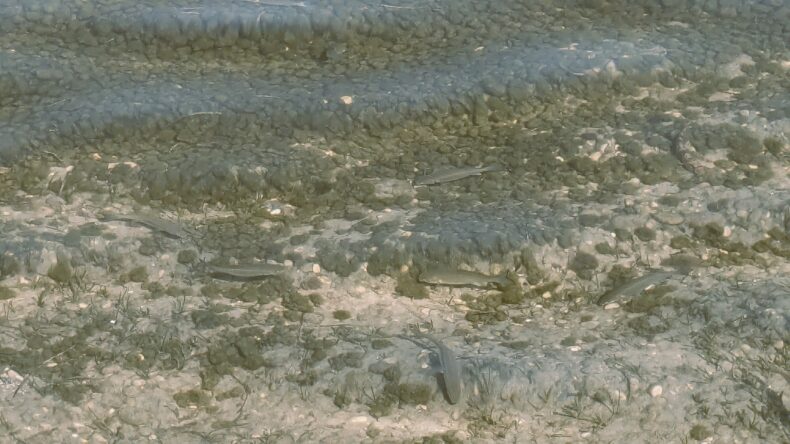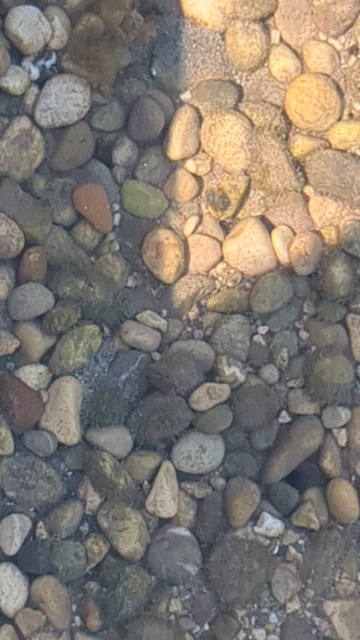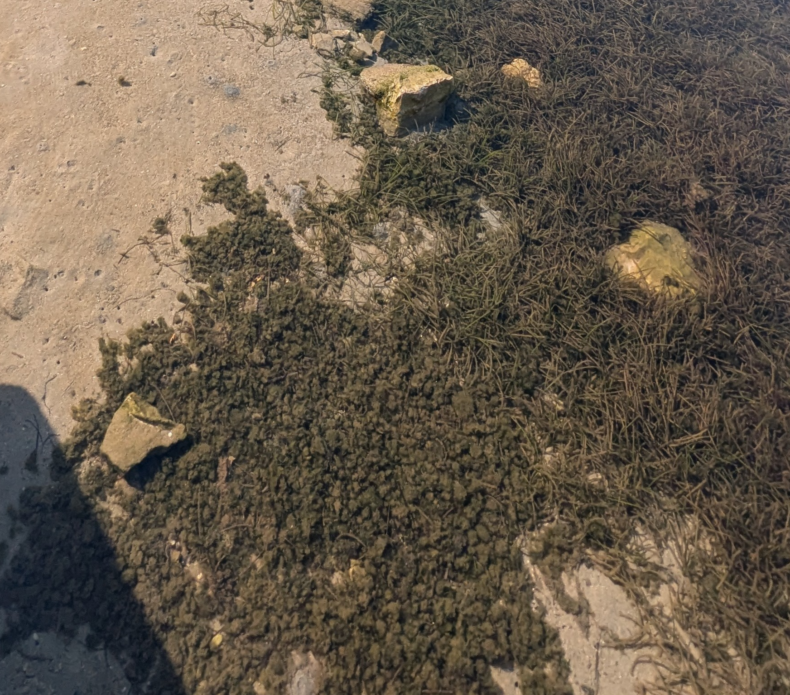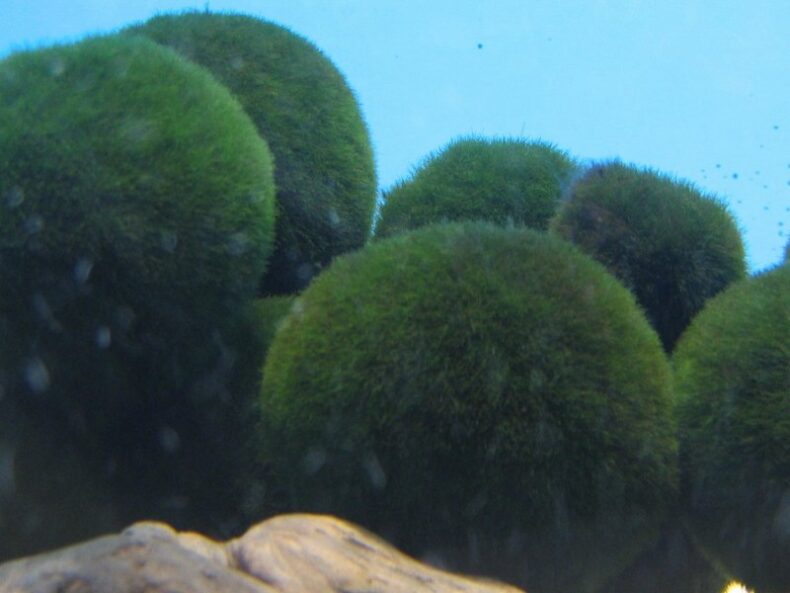
The round things in this picture of clear water aren’t rocks. They are little balls of algae tumbling around the bottom of the Adriatic sea off the Croatian coast. Occasionally they float to the surface of the water.

Looking at these little balls is likely having a very different effect on you than it had on me. When I saw them I ran around the beach barking for my camera, because I think they might be marimos, and marimos have no business being here. My problem is that I have the marimo brain virus. You may have it too by the end of this post, so if you don’t want to get obsessed with strange algal life forms and start embarrassing yourself at beaches, consider switching to a different tab.
Marimos are strange. You can sound like a maniac trying to describe them. But here, let me put on my most sober mien. The basics: a marimo is an unusual clump of algae that has formed into a free-rolling sphere, instead of the more typical morphology, which is upright with one end attached to a rock for anchoring and its other end stretching towards the sun. You can see them side by side in this picture.

In some lakes – most notably in Japan – the particular conditions in the water create a shape that becomes so large, so perfectly spherical, and so velvety green, and they roll around in such a peculiar pattern, that they may appear almost sentient. One name for them is “lake goblins”. A tapestry of folklore has been stitched around the little spheres – some controversy exists around which bits are authentic and which have been astroturfed for tourists – but there’s been a Marimo festival in Hokkaido every October since 1950. They were designated a National Treasure in 1921.

Some people become a bit obsessed with them. I count myself increasingly among their number. There’s something about these fluffy little chonks that just scrambles your brain’s ability to categorise. People keep them as pets, importing them from places like Holland and Ukraine, where they’re grown in marimo farms a bit the way Christmas trees are grown on Christmas tree farms. They are hollow inside and little aquatic communities thrive there. Is it an ecosystem? Is it a little water spirit? Is it a creature?
Whatever it is, it is not welcome in Norway. Importing them became illegal after it was found that they may harbour zebrafish mussel larva. When disposed of carelessly (eg your marimo dies and you flush it down the toilet with surviving stowaways), this is an invasive species that can decimate local populations.
But also! Marimos themselves are endangered by climate change. Hotter water messes with the balance between growth and dessication that make them such a perfect little closed system. This will be especially devastating for the giant marimo that are the platonic ideal of marimo-ness.
So you’ll understand why I was so excited when I stumbled upon this motherlode in the inhospitably warm Adriatic. Sure, they looked less like the stately velveteen perfection of Hokkaido, and more like their shaggy Dickensian relations. But they sure as heck were round balls of seaweed rolling around in a shallow body of water.
Then I found a paper that identified, for the first time, aegagropilous (“ball”) cladophora (“seaweed”) on the upper Adriatic coasts in 2021. The Gulf of Trieste is a long way north from where I was, and its waters quite a bit cooler and welcoming of marimo type situations. But it’s the same Adriatric and these were fluffy algae balls. So I guess I am left wondering about the future of these little lake goblins. Under what criteria can a ball of seaweed be described as a marimo? Do these things I found actually count? Could the dishevelled little Adriatic versions thrive in a warmer future where their elegant cousins perish?
I eventually, grudgingly decided against bringing one back with me to London amongst my 100ml travel liquids. Did not fancy trotting out this long tale for the fine folks at Dubrovnik airport security.
Images are the author’s, except for the perfect chonky floofballs which are CC 3.0 – courtesy of the Marimo (Aegagropila linnaei) in Akankohan Eco-Museum Center, Japan